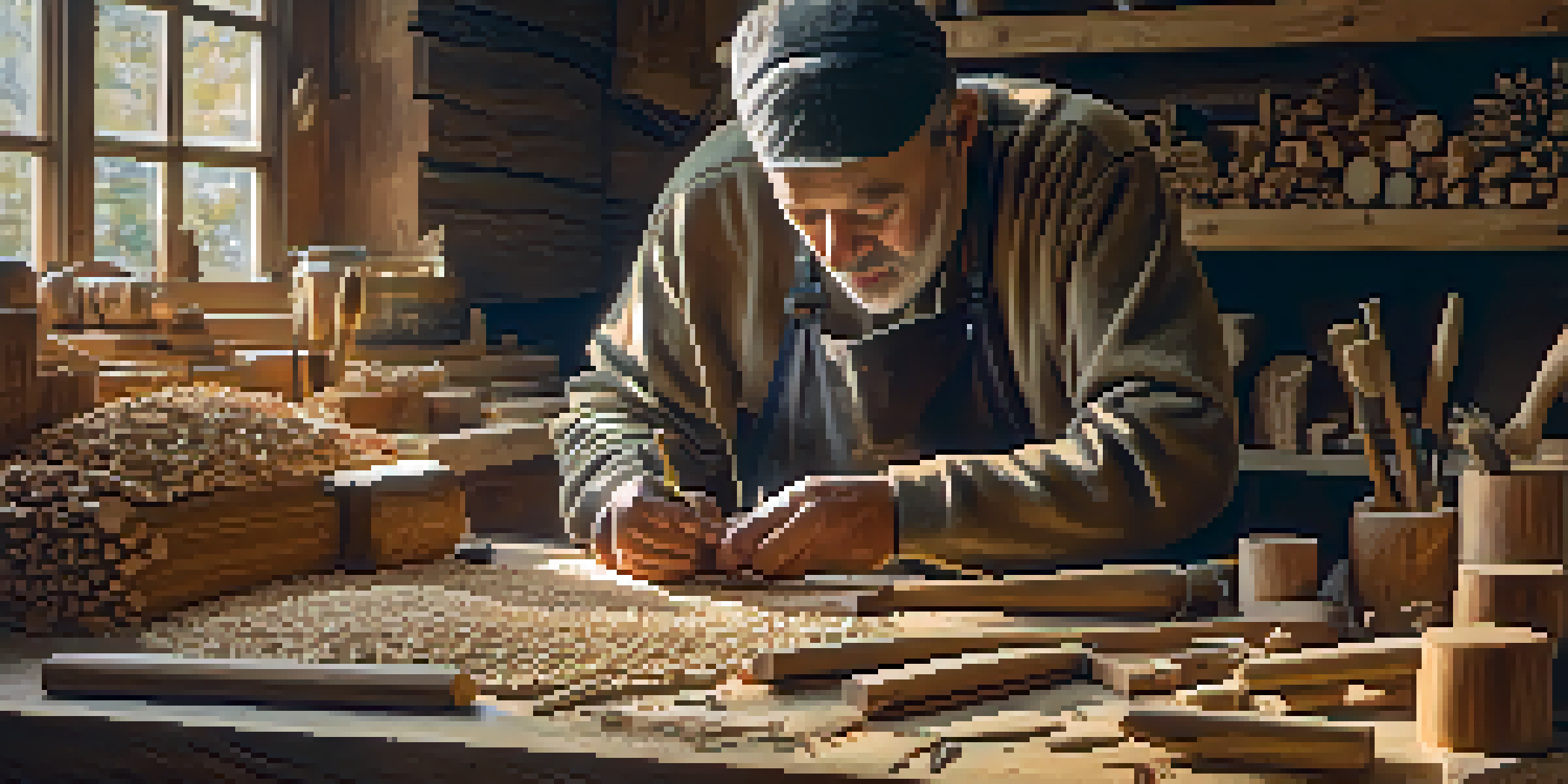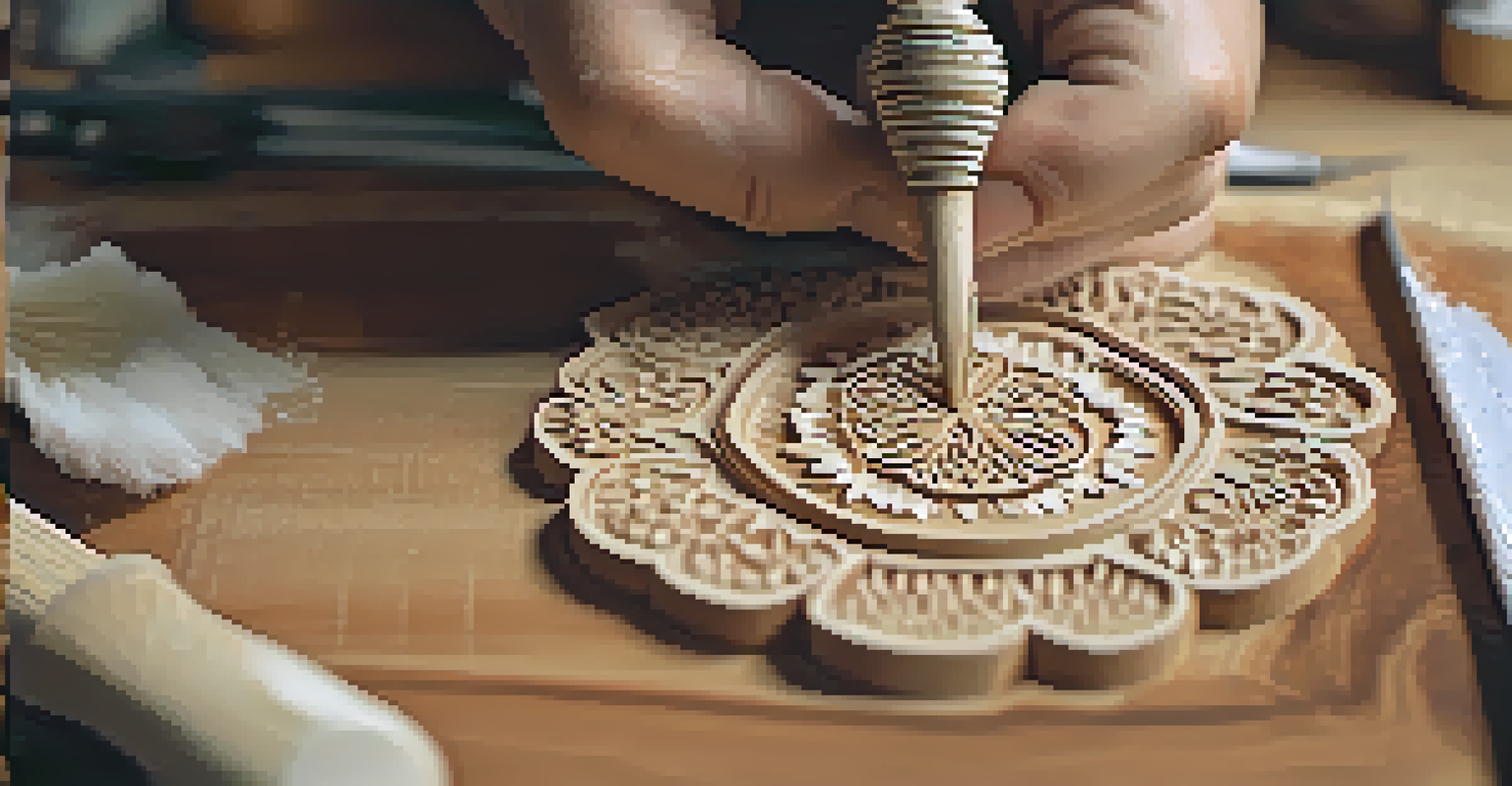Integrating Traditional Carving in Modern Restoration Projects

The Importance of Traditional Carving in Restoration
Traditional carving is not just an art form; it plays a crucial role in restoration projects. By integrating these age-old techniques, restorers can preserve the authenticity of historical structures. This attention to detail ensures that the essence of the original craftsmanship is maintained, creating a bridge between the past and the present.
Art is not what you see, but what you make others see.
When a building or artifact is restored, it often loses its original character due to modern methods. Traditional carving offers a way to bring back that lost charm, providing a visual and tactile connection to history. This approach not only honors the artisans of the past but also educates future generations about their skills.
Ultimately, the inclusion of traditional carving techniques in restoration projects results in a more holistic and respectful approach to heritage preservation. It highlights the value of craftsmanship and reminds us that each carve and chisel stroke tells a story worth preserving.
Techniques of Traditional Carving to Consider
There are various traditional carving techniques that can enhance modern restoration efforts. Techniques such as relief carving, in which designs are carved into a flat surface, can be used to recreate intricate details seen in original works. Understanding these methods allows restorers to choose the right style that complements the structure they are working on.

Another technique to consider is chip carving, which involves removing small chips of wood to create patterns and shapes. This approach can be particularly effective in restoring decorative elements that have deteriorated over time. By using these techniques, restorers can match the original aesthetic while ensuring durability.
Traditional Carving Preserves History
Integrating traditional carving techniques in restoration projects helps maintain the authenticity and character of historical structures.
Each technique requires a specific skill set and understanding of materials, making it essential for restorers to collaborate with skilled traditional carvers. This partnership not only fosters respect for the craft but also ensures that restoration projects maintain their historical integrity.
Balancing Modern Techniques with Tradition
While traditional carving is invaluable, it’s important to find a balance with modern restoration techniques. The use of contemporary materials and tools can provide stability and longevity that traditional methods alone might not offer. By merging these two approaches, restorers can create structures that are both beautiful and structurally sound.
The past is never dead. It's not even past.
For instance, using modern adhesives alongside traditional joinery techniques can enhance the durability of restored elements. This hybrid approach allows for the preservation of the original craftsmanship while also ensuring that the work can withstand the test of time. It’s about taking the best of both worlds.
Finding this equilibrium requires careful planning and a deep understanding of both traditional and modern methods. Collaboration among architects, historians, and skilled artisans can lead to innovative restoration solutions that respect the past while embracing the future.
The Role of Artisans in Restoration Projects
Artisans play a vital role in integrating traditional carving into modern restoration projects. Their expertise not only brings authenticity but also helps educate other team members about the nuances of historical craftsmanship. This sharing of knowledge can elevate the entire restoration process.
Moreover, working with artisans fosters a sense of community and collaboration. These skilled individuals often come from backgrounds steeped in tradition, and their passion for their craft can inspire others involved in the project. This collective enthusiasm can lead to a more thoughtful and creative restoration approach.
Balancing Tradition and Modernity
Successful restoration requires a harmonious blend of traditional carving methods and modern techniques to ensure both aesthetic appeal and structural integrity.
Artisans not only carry the skills of traditional carving but also contribute to the narrative of the restoration. Their hands bring life back to aged wood and stone, allowing stories of the past to be told through the structures they restore.
Challenges in Integrating Traditional Carving
Integrating traditional carving into modern restoration isn't without its challenges. One major hurdle is the availability of skilled artisans who are proficient in these techniques. As fewer craftsmen practice these arts, restorers may struggle to find individuals who can achieve the desired results.
Additionally, there can be a misconception that traditional methods are outdated or less effective than modern techniques. This bias can lead project managers to overlook the unique benefits that traditional carving brings to restoration. Educating stakeholders about the value of these techniques is essential for successful integration.
Lastly, the time and cost associated with traditional carving can also pose challenges. Restorers need to balance budget constraints with the desire for authenticity, often requiring creative solutions to ensure that traditional techniques are incorporated without compromising the project’s financial viability.
Case Studies of Successful Integrations
There are several inspiring case studies that showcase the successful integration of traditional carving in modern restoration projects. For instance, the restoration of a historic church involved recreating intricate wood carvings that had been lost over the years. Collaborating with skilled artisans allowed the team to accurately reproduce these features, preserving the church’s heritage.
Another case is the revitalization of a historic home where traditional plaster carving techniques were used to restore decorative ceilings. This project not only enhanced the aesthetic appeal but also helped maintain the building’s historical significance. It serves as a perfect example of how traditional craftsmanship can breathe new life into older structures.
Artisans Enhance Restoration Efforts
Skilled artisans play a crucial role in restoration projects by imparting their knowledge of traditional craftsmanship and fostering collaboration within teams.
These case studies highlight that combining traditional carving with modern restoration techniques can yield stunning results. They demonstrate the importance of respecting history while also adapting to contemporary needs, ultimately enriching the spaces we inhabit.
Future Directions for Restoration and Carving
Looking ahead, the future of integrating traditional carving in restoration projects is promising. With a growing appreciation for craftsmanship and heritage, more projects are likely to prioritize these techniques. Additionally, as technology advances, we may see innovative ways to blend traditional artistry with modern tools and methods.
For example, digital technology can assist in creating precise templates for traditional carving, ensuring accuracy while preserving artistic intent. This fusion of old and new could open doors to explore more complex designs that were previously difficult to achieve. It’s an exciting time for artisans and restorers alike.

Moreover, as communities recognize the value of their architectural heritage, there will be increased support for restoration initiatives. This shift in mindset will not only benefit the preservation of traditional carving techniques but also inspire future generations to engage with and celebrate their cultural history.